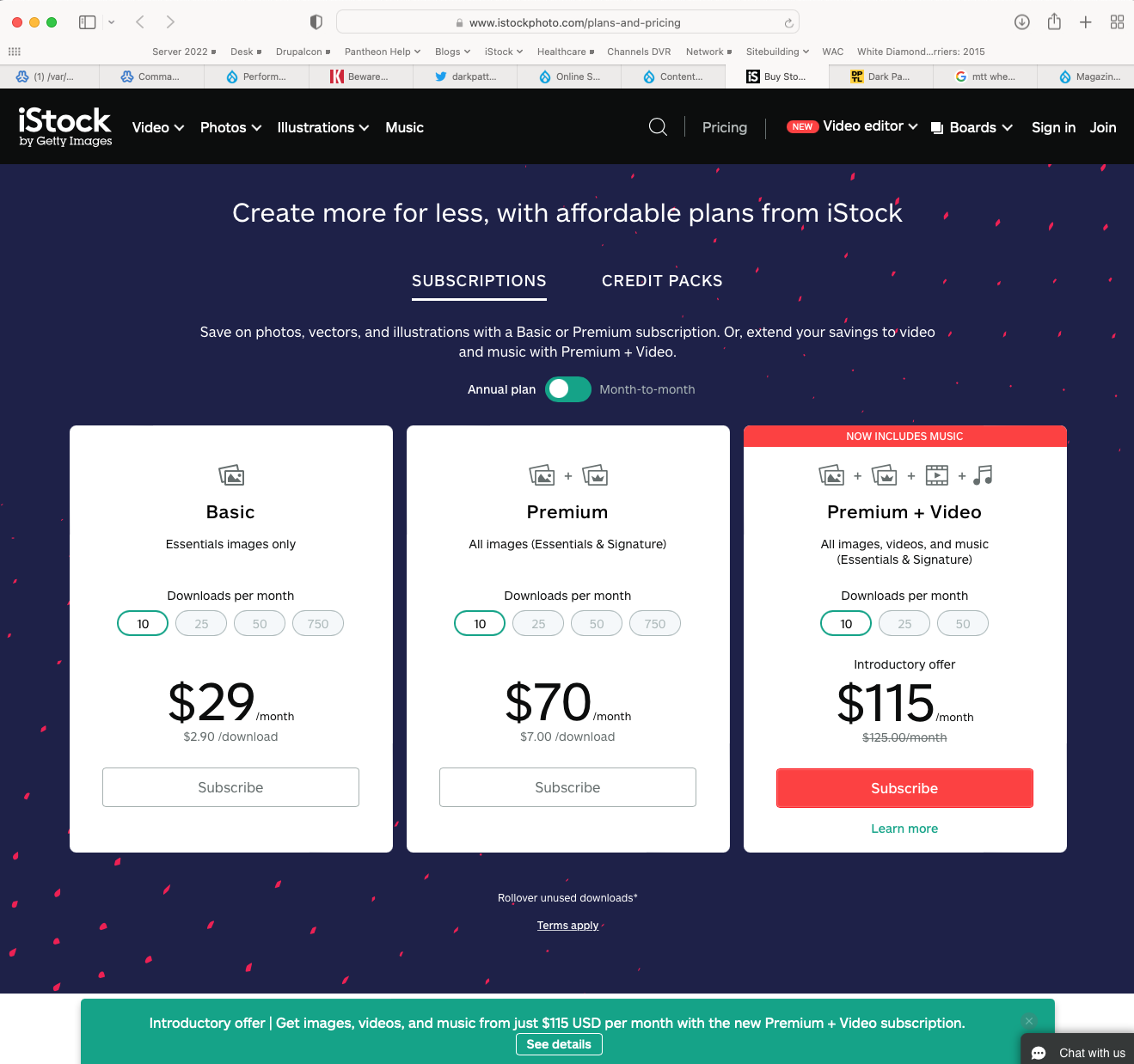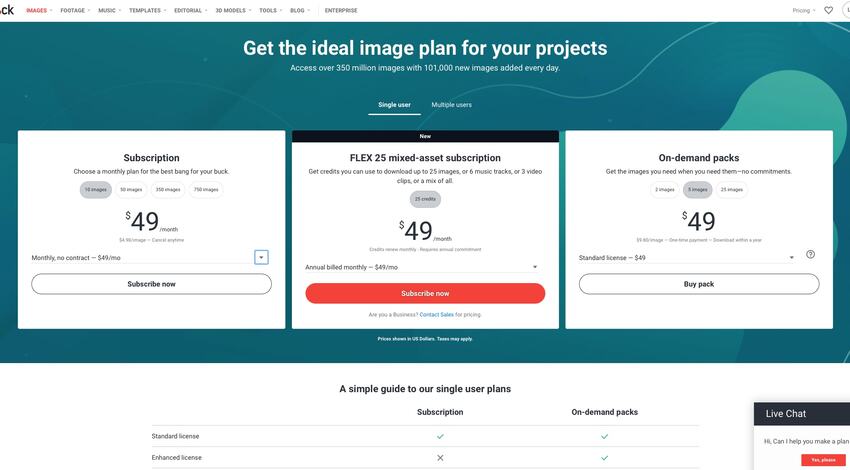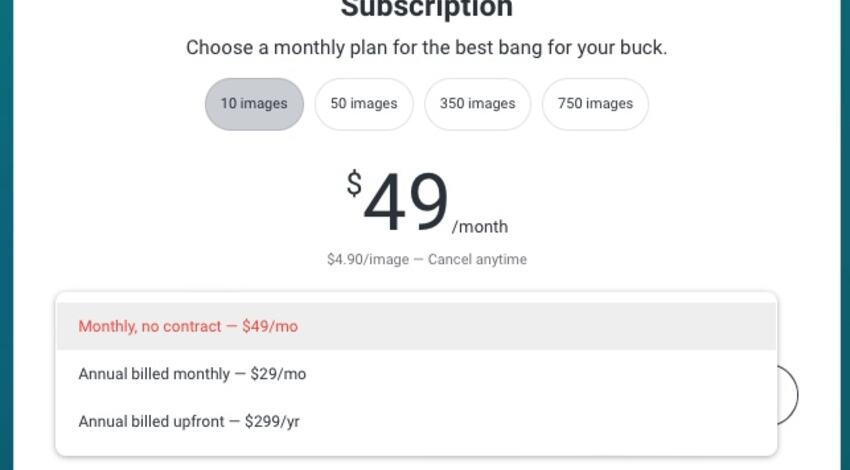Online Subscription Not What You Ordered? You May Be A Victim Of Dark Patterns
Are you paying for a service you are certain you didn't order? It may not be your fault! Here's what to look for, and what to do.

Is a company--for me, it's iStockphoto--telling you signed up for a service or subscription ... when you're sure you didn't? That business may be using "dark patterns": the manipulation of Web site design to create confusion and influence user behavior.
Recently, I experienced a troubling customer service issue with long-term partner iStock. Since 2012, they've supplied images used on this Web site; I'd made changes to my subscription late last summer, believing I was signing up for a short-term, month-to-month plan.
With a long-planned retirement imminent and my sites headed to archive status, I won't need access to stock photos after this month--but when I tried to cancel, iStock's chat agents insisted that my account was an annual subscription. The chat rep insisted that I had agreed to pay for unwanted, unneeded services for several more months, until next September.
Let's just say there was some noise. I think my reaction made it quite clear that I was very, very surprised at the news. I pointed out that my business, credit card and income were ending THIS MONTH. I had downloaded only 6 or 7 cheap image files, was not using the service, and had no intention of ever burdening myself with it once I closed up shop.
I didn't get a resolution I was happy with--and I left the ugly transaction very, very surprised that a long-time partner would play hardball in these facts.
So I decided to find out why. The answer may lie with "dark patterns": a method of Web design that creates and exploits user confusion for financial gain.
What are Dark Patterns?
When a web site uses "dark patterns" to mislead, it designs the site to nudge or distract the user's attention in order to affect their behavior and choices--and these days, that process is automated and fine-tuned by artificial intelligence. Dark patterns are subtle and hard to spot ... and can be very, very lucrative for the unscrupulous firms who use them.
Two things happen when an online business employs dark patterns to mislead. First, their Web design is planned to focus on certain parts of the page, while drawing attention away from other areas. If a business wants to sell as many annual subscriptions as it can, the site will be designed for that goal. Second, constant testing and editing is done via AI, to see which Web design gets the best result.
In Housewife Webmaster terms, using "dark patterns" would mean designing this Web site to encourage--or confuse--a user into doing something I want them to do.
To do that, AI software begins to change the site--make titles larger or smaller, move a button, change the default selection on a form, edit order of items in a list--and then runs tests to see how many users take up the desired behavior. If more readers do what I want--read my pantry article, say--AI makes it easy to click a button and make that design change permanent.
Change upon change upon change, more readers will tend to go where I want them to go, because the Web design has been designed and tweaked to create that behavior.
The problem occurs when this superpower is used for evil: when these methods are used to trick, dupe or distract the consumer in an online transaction, obscuring their knowledge of the contract terms and preventing an informed consent.
What Happens On A Dark Pattern Web Site?
What happens when these methods are used to influence a business transaction? Here, iStock has created a pricing page which makes it very easy to overlook the "annual/monthly" option button.

With small type, floating placement and a default set to "annual", it's easy to overlook the small button when researching price on the next section of the page. Note that the option for month-to-month is downplayed: small, light, grey and low-contrast.
By contrast, here's the pricing page from a competitor. Shutterstock makes it clear what you're buying, by displaying this information explicitly in each info tile. Located beneath the page's large price element and directly above the subscribe button, this design draws the user's attention toward--not away from--these details.

Better, Shutterstock's Web design ensures that the customer has given an explicit, informed consent to the subscription option selected, as the form won't continue without it. Here, Web design helps the consumer by forcing an affirmative selection between "annual" or "monthly":

By contrast, iStock doesn't seem to want you to notice the month-to-month option. And I did not.
Was I careless? You bet. Be warned. Don't be me.
Online iStock Subscribers Report Unwanted Annual Subscriptions
But I'm not alone.
Once I started looking into the issue, I found multiple reports of customers who were paying for an unwanted iStock subscriptions they insisted that they never bought, citing classic "dark pattern" experiences:
Sven talks about being tricked into buying a subscription he did not want:
As others have reviewed here, this website is using an unusual payment model with can easily trick you into agreeing to pay a high fee monthly for an entire year. I thought I was purchasing a month of photo downloads for $70, but the contract is to agree to pay $70 / month every month for a year, with no way to cancel. This isn't exactly a scam, but it's not at all what I thought I was agreeing to. Beware!
Another report, from Matt:
When I decided to try Istock I was very carful not to have an ongoing subscription. I opted for "credit" program. However, I was billed as a subscription. I called when I noticed this and thought I had resolved the issue. They continued to bill me as a subscription. I have threads of emails proving that i cancelled the subscription. I actually had to go to my bank to force the return of the fees. Run from these guys.
Is This Legal? FTC Now Taking Aim, Requiring "Express Informed Consent"
Good news! This unfair practice is getting increasing attention from government regulators. New rules from the Federal Trade Commission aim to stop this scam:
The Federal Trade Commission issued a new enforcement policy statement warning companies against deploying illegal dark patterns that trick or trap consumers into subscription services. The agency is ramping up its enforcement in response to a rising number of complaints about the financial harms caused by deceptive sign up tactics, including unauthorized charges or ongoing billing that is impossible cancel.
Under these rules, businesses can be subject to legal action when they use dark patterns to confuse consumers. Businesses must follow three key requirements or be subject to law enforcement action, including potential civil penalties if they do not:
- Disclose clearly and conspicuously all material terms of the product or service, including how much it costs, deadlines by which the consumer must act to stop further charges, the amount and frequency of such charges, how to cancel, and information about the product or service itself that is needed to stop consumers from being deceived about the characteristics of the product or service. The statement provides detail on what clear and conspicuous means, particularly noting that the information must be provided upfront when the consumer first sees the offer and generally as prominent as the deal offer itself.
- Obtain the consumer’s express informed consent before charging them for a product or services. This includes obtaining the consumer’s acceptance of the negative option feature separately from other portions of the entire transaction, not including information that interferes with, detracts from, contradicts, or otherwise undermines the consumer’s ability to provide their express informed consent.
- Provide easy and simple cancellation to the consumer. Marketers should provide cancellation mechanisms that are at least as easy to use as the method the consumer used to buy the product or service in the first place.
This Is Me. What Do I Do Now?
I suppose I was lucky, because I was able cancel the unwanted subscription. Cancel on extremely poor terms, but cancel. Others have not had the same experience.
These tactics worked for me, but your mileage may vary:
- Chat, Don't Call I do it because I'm deaf, but negotiating by chat creates a written record that can be helpful when negotiating ... or spreading the word about the practice.
- Be Persistent I added "Contact iStock" to my calendar at the beginning, middle and end of each work day. By that time, I had been assigned to a specific retention-specialist type of person, so I both emailed them and opened a chat asking for an update three times a day.
- List Supporting Facts Make a list of any facts that would bolster your claim of mistake. In my case, it was very helpful to point out that I didn't make use of the account for four months, was about to retire, and have no further need for their service. They pushed back hard, but I just kept playing broken record, saying, "But no, I didn't order this, I'm not using this and I won't have a way to pay for this ... clearly there has been a mistake."
- Take Time To Consider Settlement Options Expect to be hard-balled by iStockphoto, if my experience is to be trusted. But if you are persistent (again, broken record), you may be offered some settlement possibilities. I insisted on 24 hours to contact my advisors, think hard and decide which of the two unacceptable options I was going to have to accept.
- Alert Other Subscribers Consumers have power, too: they talk to one another. Case in point, this blog post. You got here, so spread the word! Social media and word-of-mouth can protect other consumers by raising awareness of the issue. Leave reviews at sites like TrustPilot or SiteJabber to alert others to these questionable tactics.
- Report Unfair Practices I wanted to do even more, so I made a report to the Dark Patterns Tip Line. This organization collects evidence of this subtle but unfair practice. If you've been scammed, consider reporting to Federal and state authorities; the Federal Trade Commission takes online reports of seller abuse. Check with state agencies for options; find your state's office of consumer protection here.



